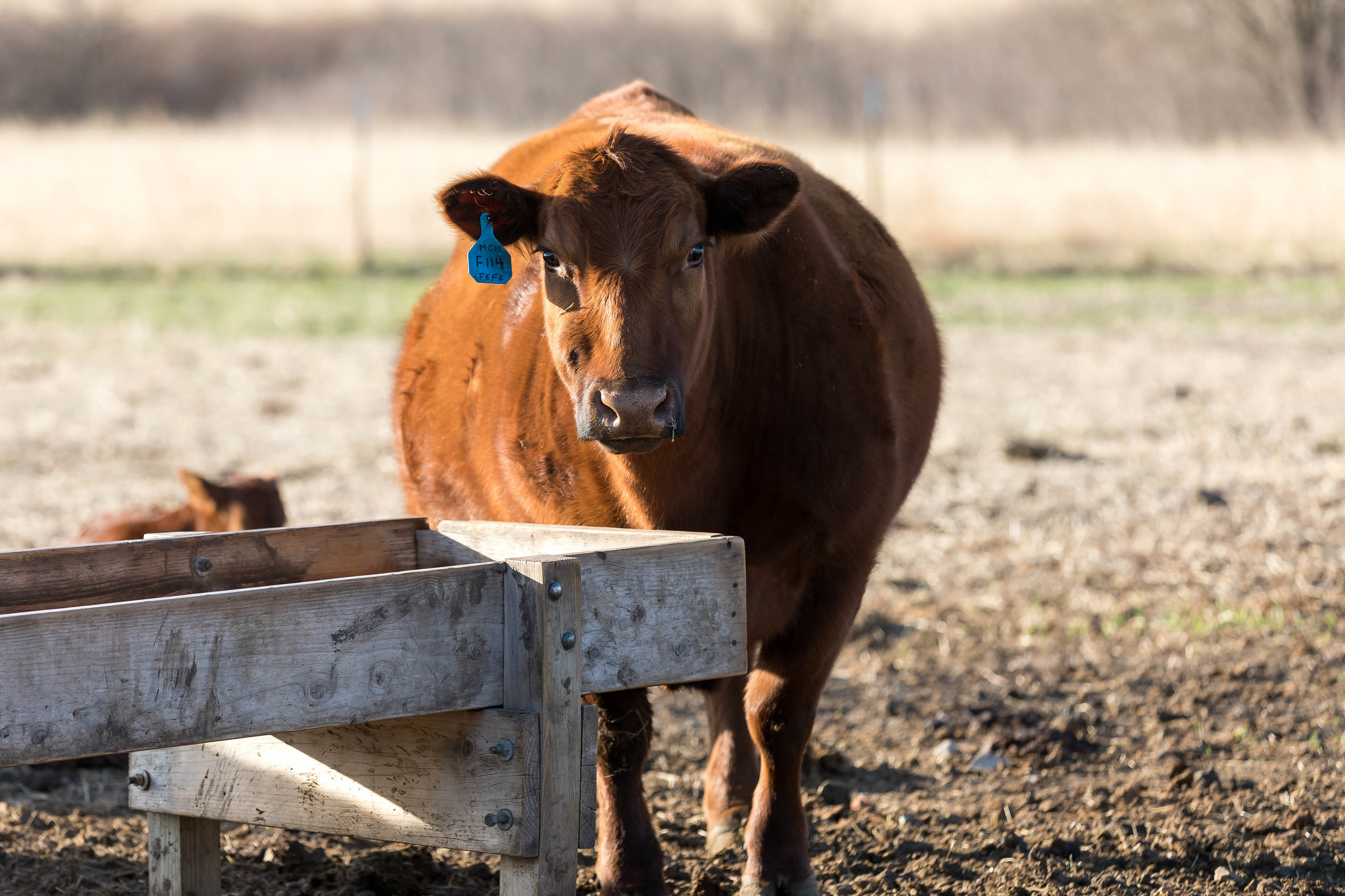
Ration balancing helps producers create the optimum nutrition plan for the cowherd. | Download this photo.
Cattle Chat: Feeding to manage diminishing returns
K-State cattle experts offer ways to optimally balance the rations for the cowherd
April 25, 2023
By Lisa Moser, K-State Research and Extension news service
MANHATTAN, Kan. — To stay financially solvent, many people follow a monthly budget. One component of that is a weekly meal plan to make sure their nutritional needs are being met.
In much the same way, beef producers also need to balance the rations for the cowherd to make sure the nutritional needs are addressed while keeping the financial records sound, say the experts at the Kansas State University Beef Cattle Institute.
Speaking on a recent Cattle Chat podcast, agricultural economist Dustin Pendell used the example of crops and fertilizer when explaining the law of diminishing returns.
“When thinking about crops, adding fertilizer can increase yields but there is a point where adding more fertilizer can actually do harm, and that is an example of how diminishing returns can happen in agriculture,” Pendell said.
Veterinarian Brad White took that analogy further, adding: “If the cow is efficiently using the feedstuffs, that is a good return on my investment, but if she gets overweight that is a sign of a diminishing return on what I’m feeding.”
In that scenario, producers need to look at the entire herd to decide how to best manage the feed, said nutritionist Phillip Lancaster.
“If I’m trying to move my heifers from an 85% pregnancy rate to a 90% rate, I have to increase the feed for the whole herd, but if I only get a 2% increase in the pregnancy rate from the increased feed, the cost of that management strategy may not make sense financially,” Lancaster said.
He also said with vitamins and minerals, cows can be in one of three states – deficient, adequate and overfed.
“The law of diminishing returns says I’m going to get a big boost in performance if my cattle are moved from deficient to adequate nutrient levels, but if I go too far there will be a decrease in performance,” Lancaster said.
To know what the right balance is, Lancaster recommends producers research the nutrient requirements for the cows and estimate their consumption of feed, supplements and forage. With that information, producers can consult with a nutritionist or veterinarian to formulate a plan.
To hear the full discussion, listen to the Cattle Chat podcast online or through your preferred streaming platform.

